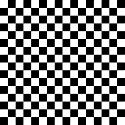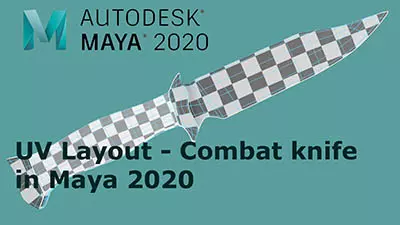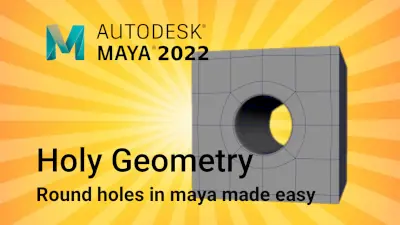Introduction to Maya - Modeling Fundamentals Vol 1
This course will look at the fundamentals of modeling in Maya with an emphasis on creating good topology. We'll look at what makes a good model in Maya and why objects are modeled in the way they are.
#
1
08-02-2012
, 08:06 PM
Render settings question
https://i43.tinypic.com/qybkeq.jpg
I usually use Production quality when I render but I wanted to know what all the others do?
2. And I set my AO render colors to white and black but I still see a lot of grain in my renders. i set my samples to 72 and my resolution to 1k square plus 300 resolution but I still see too much noise/grain. Do I just keep cranking my resolution?
Thank you
"Those who would give up essential liberty to purchase a little temporary safety, deserve neither liberty nor safety." -- Benjamin Franklin
#
2
08-02-2012
, 08:21 PM
2. Are you increasing the samples on the ao node?
Don't render 1k square. Having a square image will just give you a boring composition. Also stick with 70dpi if that's what you increased.
#
3
08-02-2012
, 08:41 PM
that's why i posted this
"Those who would give up essential liberty to purchase a little temporary safety, deserve neither liberty nor safety." -- Benjamin Franklin
#
4
08-02-2012
, 08:56 PM
EduSciVis-er
Join Date: Dec 2005
Join Date: Dec 2005
Location: Toronto
Posts: 3,374
One way to learn would be to change the preset and see which settings get changed. Then look up the setting (e.g. anti-aliasing) if you don't know what it is.
Or come back here to ask about a specific setting.
Edit: Also, increase the samples to reduce AO noise.
#
5
09-02-2012
, 11:05 PM
I crank it up to 72
Also how do i stop the AO bleed like the whites mix together in the render even if there are two different objects next to each other?
"Those who would give up essential liberty to purchase a little temporary safety, deserve neither liberty nor safety." -- Benjamin Franklin
#
6
10-02-2012
, 05:27 AM
1.) Max Sample Level (raytrace/scanline quality drop down menu)
2.) multi pixel filtering
3.) raytracing(values of reflections refractions and shadows)
4.) final gathering (in indirect lighting tab)
5.) point density and point interpolation ( in final gathering settings)
keep max sample level to 3.
in multi pixel filtering use Gauss , value = 2.5 by 2.5
in raytracing keep values for reflections = 10 , refr4actions = 10 shadows = 20 (skip refractions if there are no refractions in your scene)
in final gathering , point density = 10 and point interpolation should be 50-100.
and i would like to know how you are rending AO?
#
7
10-02-2012
, 06:31 AM
Subscriber
Join Date: Oct 2011
Join Date: Oct 2011
Posts: 139
in multi pixel filtering use Gauss , value = 2.5 by 2.5
I admit I don't know much about rendering settings, but Lanczos 4x4 gives me the nice sharp edges. I guess it depends what you're going for. (You can get the sharp edges by disabling multi-pixel filtering in software rendering).
2)
There's an AO tut here: https://simplymaya.com/autodesk-maya-...=180&sub_cat=0
It's using render layers, not MR, but I'm getting nice effect from it, no grain. btw. the whites are alpha channel.. they disappear once you composite it on the original image, so does it matter if they bleed?
#
8
10-02-2012
, 08:57 AM
Oh I don't know maybe you change values and note down what happens. Maybe you google thing you don't know like anti aliasing. Maybe you use the help files. Maybe you look at the types of filters and find out what they do.HOW do i learn about the render settings??
that's why i posted this
#
9
10-02-2012
, 09:13 AM

Avatar Challenge Winner 2010
#
10
10-02-2012
, 10:06 AM
Registered User
Join Date: Mar 2007
Join Date: Mar 2007
Posts: 1,055
#
11
10-02-2012
, 11:46 AM
The render settings should be based on what you are rendering. right?
So saying something like change this to 4 and set that at 2 doesn't work. you need to learn why you are setting something to 4 or something to 2.
#
12
10-02-2012
, 02:53 PM
Subscriber
Join Date: Oct 2011
Join Date: Oct 2011
Posts: 139
Anyway here's a basic guide: https://area.autodesk.com/userdata/fo...GPW49V3hFT.pdf
I don't think it's very helpful to learn about rendering by changing a value after value and re-rendering as a lot of the changes will be very hard to notice if you don't know what you're looking for and some will only affect specific effects that you might be missing in your scene. On the other hand I agree that it's a huge topic, so just pick one value and ask about it, unless you want to get slaughtered here..

#
13
10-02-2012
, 03:37 PM
the question was asked about presets. i said learn about render settings and you wont need the presets and got a sarky reply.
changing value after value is exactly how you should learn about rendering. its not like you have to render a beauty pass every time. just 3 lights and a sphere will do. it wouldn't even take much time.
Last edited by honestdom; 10-02-2012 at 03:50 PM.
#
14
10-02-2012
, 07:46 PM
If you want to learn about the render settings, then you can start with "Help>Render Settings" menu at the top of the render settings window. There's a ton of info on all the different tabs.
Personally, I think the "production" preset is just overkill on the raytrace settings in many cases. And if someone doesn't understand the basics then bringing FG settings into the conversation is only going to muddy up the waters further.
Posting Rules Forum Rules
Similar Threads
Maya - render settings: orange
by nov2011 in forum Maya Basics & Newbie Lounge replies 2 on 31-01-2012
HDRI render question
by farbtopf in forum Maya Basics & Newbie Lounge replies 6 on 05-03-2007
no mental ray in render settings
by tistatos in forum Maya Technical Issues replies 3 on 24-02-2007
render layer question
by danotronXX in forum Maya Basics & Newbie Lounge replies 1 on 12-02-2007
Topics
Free Courses
Full Courses
VFX News
How computer animation was used 30 years ago to make a Roger Rabbit short
On 2022-07-18 14:30:13
Sneak peek at Houdini 19.5
On 2022-07-18 14:17:59
VFX Breakdown The Man Who Fell To Earth
On 2022-07-15 13:14:36
Resident Evil - Teaser Trailer
On 2022-05-13 13:52:25
New cloud modeling nodes for Bifrost
On 2022-05-02 20:24:13
MPC Showreel 2022
On 2022-04-13 16:02:13












